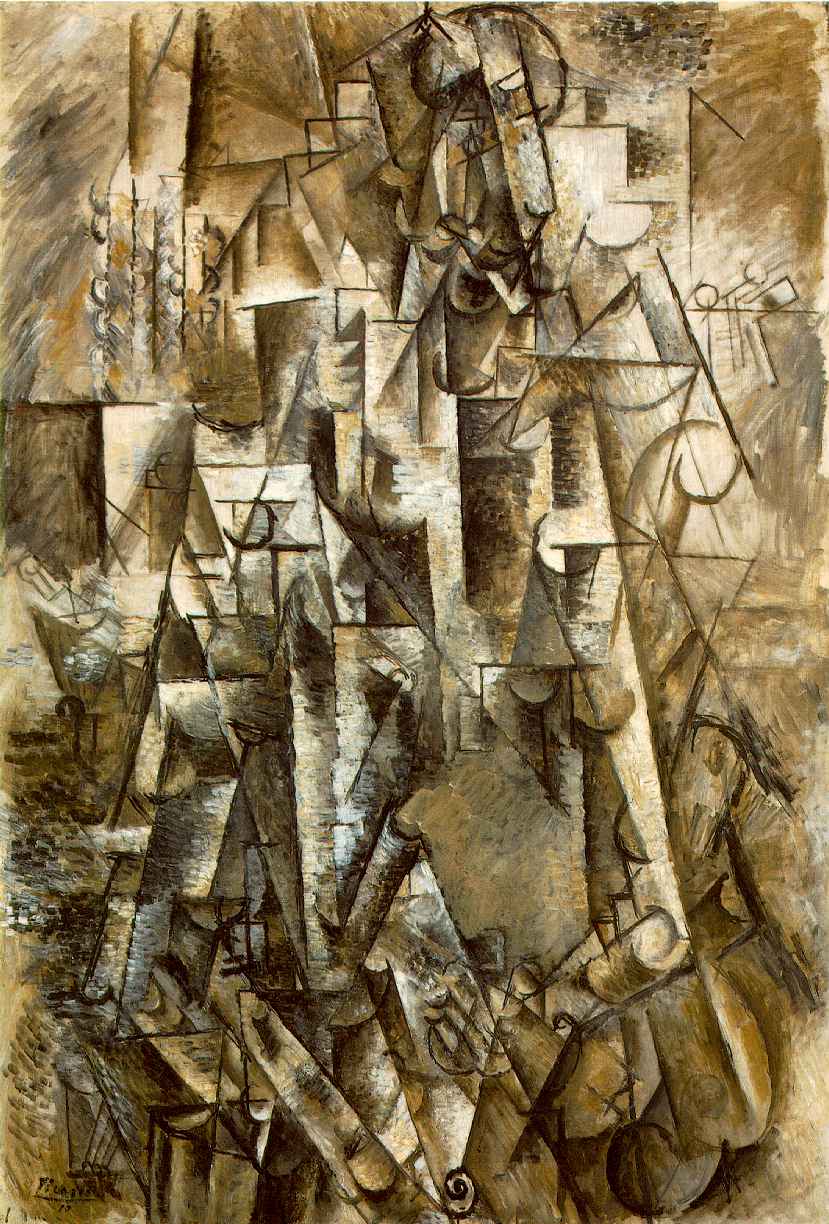art-Picasso.com
Pablo Picasso 1881-1973
©Pablo Picasso - 1911 The Poet
 The Poet |
From The Solomon R. Guggenheim Foundation:
Like The Accordionist in the collection of the Solomon R. Guggenheim Museum, The Poet was painted during the summer of 1911, when Pablo Picasso was working in close association with Georges Braque in the French Pyrenees town of Céret. Similar in style and composition to Braque’s contemporaneous Man with a Guitar (Collection The Museum of Modern Art, New York), this canvas epitomizes the moment in the development of Analytic Cubism when the degree of abstraction was so extreme that objects in the painting are almost unrecognizable.
As the title indicates, it is the human form that has been visually dissected and reconstructed as an architecture of rectilinear and curvilinear elements. Despite the elusiveness of the visual clues, the viewer can detect a densely articulated central pyramidal figure fused coloristically and texturally with the less detailed ground. The small circle at the upper center of the canvas penetrated by the acme of a triangular plane becomes an eye when associated with the longer, broader plane of a possible nose and the crescents of a probable mustache. Once this recognition occurs, a complete image can be reconstituted by the inference of chin, pipe, neck, attenuated torso, elbows, and chair arms.
Picasso presents multiple views of each object, as if he had moved around it, and synthesizes them into a single compound image. The fragmentation of the image encourages a reading of abstract rather than representational form. The imagined volumes of figure and object dissolve into non-objective organizations of line, plane, light, and color. Interpenetrating facets of forms floating in a shallow, indeterminate space are defined and shaded by luminous, hatched, almost Neo-Impressionist brushstrokes. The continuity of certain lines through these facets creates an illusion of a system of larger planes that also float in this indefinite space yet are securely anchored within an architectonic structure. The chromatic sobriety characteristic of works by Picasso and Braque of this period corresponds with the cerebral nature of the issues they address.
Lucy Flint